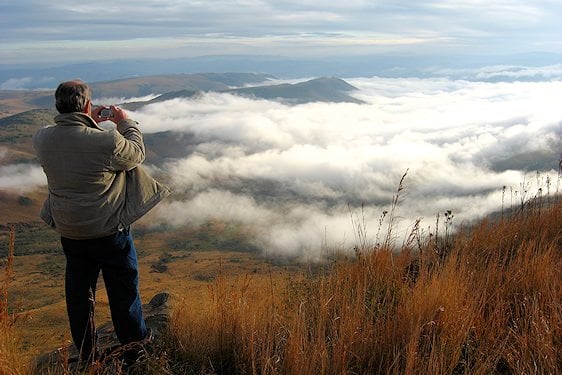- Home
- >
- African Travel
- >
- South Africa
- >
- National Parks
- >
- Kruger National Park
- >
- Mammals
- >
- Mountain Reedbuck
Description
Mountain reedbuck are lean antelope with coats ranging from deep brown to warm ginger. The face is lightly marked, and the underparts are paler for contrast. Only males have horns, which are shorter than those of related species and less laterally flared. The compact build and sure-footed stance suit rocky slopes and broken, high-altitude terrain.

They are not widely distributed and occur in three separate populations in Africa. The first, in South Africa, extends from parts of the Eastern Cape where the southern Drakensberg Mountains begin, along the range toward Mpumalanga and Limpopo, where it merges with the northern Drakensberg. Another population occurs in parts of Kenya and Ethiopia. A third, much smaller population is found in Cameroon’s highlands.

Status
They are assessed as Least Concern overall. The southern mountain reedbuck, the subspecies most likely in and around the Kruger region, is the most numerous, with well over 33,000 individuals. By contrast, Chanler’s mountain reedbuck is vulnerable at roughly 2,900, and the western mountain reedbuck is endangered with an estimated 450 individuals.

Habitat
These antelope occupy rocky escarpments and mountain edges, typically within major ranges such as the Drakensberg in South Africa and the Ethiopian highlands. They occur at approximately 1,500 to 5,000 meters above sea level, relying on high-altitude grasslands for forage. Permanent water nearby is an important feature of their preferred habitat.

Social Organization
Mountain reedbuck typically form small herds of up to 14, averaging four to five. One adult male governs the herd, with several females and young living under his protection. Herds occupy a home range; territoriality is not well documented. Adults may be solitary at times, though this is uncommon, and males without herds often join bachelor groups.
Finest Safari Areas in Africa for Encountering Mountain Reedbuck
We recommend the following National Parks and Private Reserves for the best chances of spotting the mountain reedbuck on safari game drives and bush walks.

Social Behavior
Mountain reedbuck rely on visual displays during territorial encounters. Males adopt an upright posture, snort through the nostrils, and may emit sharp whistles while the body trembles with arousal. Such displays advertise status and can attract mates during the breeding season. Typical acoustic signals include one to three short whistles given in quick succession.

Reproduction
Mating is seasonal and follows a brief courtship in which a male asserts dominance over a small group of females. He mates with all the females in his herd. Fawns are typically born around the start of the rainy season when forage is abundant. Mothers often hide newborns in dense cover during the first month to reduce risk from predators such as eagles and snakes.

Anti-Predator Behavior
Their response to danger is almost exactly that of the common reedbuck, with one key difference: instead of snorting while running, they whistle to alert others. Uneven, rocky terrain makes escape more challenging but also offers cover. The primary predator in many areas is the leopard.












